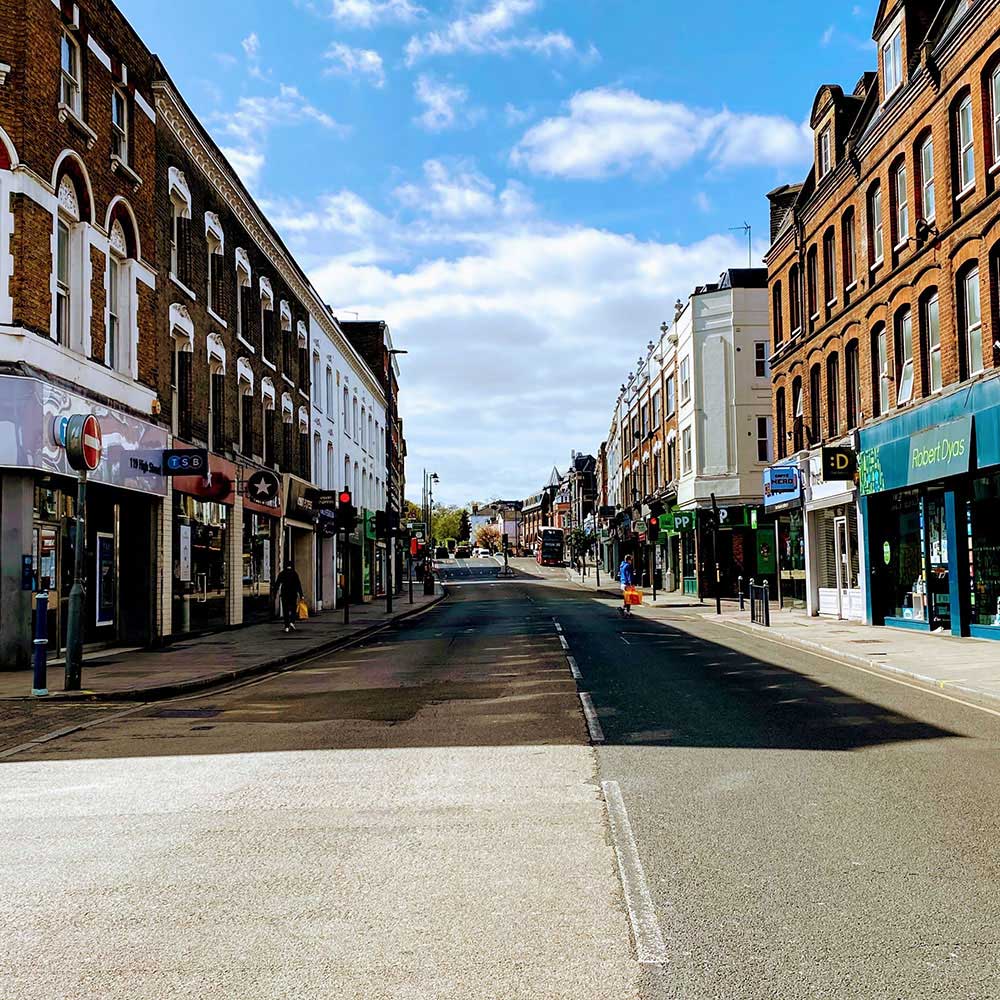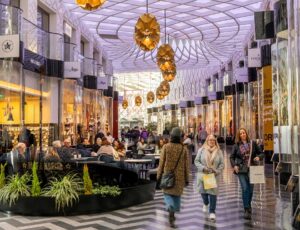
Springboard examines trends over two key periods: Lockdown (January to March 2021) and post-lockdown (April to December 2021).
Footfall across all UK retail destinations was –31.1% lower than in 2019, up from -39.1% in 2020, with retail parks continuing to display a notable resilience than either high streets or shopping centres in retaining footfall.
The impact of Lockdown 3 and the pandemic waves – Delta and Omicron
Springboard has identified that Lockdown 3 (6 January-12 April) had a dramatic effect on footfall across all destination types overall. The clear winners for footfall over the period were retail parks, with footfall dropping -33.9% below the 2019 level. This is in comparison to -69.4% in high streets and -71% in shopping centres.
The attractiveness of retail parks to consumers became even more evident following the reopening of retail in April; over the nine-month period to December, footfall in retail parks was just -4.4% below 2019 versus -25.8% in high streets and -26.9% in shopping centres.
Whilst footfall recovered a little after the lockdown was lifted, later in the year footfall in all three destination types was impacted by the increase in infections from both the Delta and the Omicron variants. In July, at the peak of Delta infections, the gap from 2019 widened to -30.5% in high streets (from -27.2% in June) and to -30.2% in shopping centres (from -29.1% in June).
The Omicron variant – which led to the government implementing Plan B guidance in December with advice to work from home if possible – had an even more significant impact on footfall. The gap from 2019 widened in high streets to -22.2% (from -15.8% in November) and in shopping centres to -24.1% (from -22% in November).
Retail parks reign
In 2021, retail parks remained the most resilient destination type. Footfall in high streets and shopping centres was -36.7% and -37.9% lower than 2019 respectively. This is in comparison to retail parks, where the drop from 2019 was less than a third of this at -11.8%.
Whilst during 2021 there remained a significant gap in footfall from 2019 (particularly in high streets and shopping centres), activity had strengthened from 2020 by +54.1% in high streets, by +53% in shopping centres and by +28.7% in retail parks. This is mostly a result of retail parks enabling easier social distancing. They are easy to access by car, so rely little on public transport; car parking is free, plentiful and outdoors; and stores are large. They also benefit from the fact that the majority have the advantage of food stores being located there.
Town centres and the growth of localism
In 2021, working from home for at least part of the week became firmly established and cemented the growth of localism, a trend identified in 2020. Springboard’s UK Consumer Survey identified that 57% of consumers worked at least part of the week at home in 2021. And, that 24% of these consumers visited retail destinations less frequently.
Inevitably this led to a proportionately greater reduction in footfall in large city centres than in more local high streets, as consumers were able to visit these easily from home during the working week. The most extreme example of the increase in localism is the comparison of footfall performance in Central London vs Outer London; footfall in Outer London in 2021 was -27.3% lower than 2019 compared with -52% in Central London.
In-store and online sales
In May to December 2021, in-store sales were -4.2% lower than the same eight-month period in 2019. However, there were some categories where sales were on par or higher than 2019. Jewellery and electrical/mobile phones saw sales rise from 2019 by +15.1%, and +3% respectively. Even in health and beauty and fashion and accessories, store sales were only very slightly lower than in 2019 (-0.5% and -0.6%).
In 2021, as a percentage of total retail sales, online sales averaged at 30%, increasing from 2020 when it averaged 27.2%. Online sales inevitably increased during Lockdown 3 to 35.7% between January and March but fell back to 28.1% between April and December.
Online sales for clothing and footwear peaked at 57.4% during Lockdown 3. However, this also means that 42.6% of spending occurred in-store, despite only essential retailers’ stores being able to trade.
Consumer confidence increases
Inevitably, the pandemic continued to impact consumer confidence. However, the consumer confidence index score as measured by GFK improved significantly in 2021 from 2020, shifting from an overall index score of -26 in 2020 to -15 in 2021. This score was heavily influenced by the adverse impact of the wider economic situation over the past 12 months (index score of -50), whilst consumers felt far more confident about their own financial position last year (index score of -8) and particularly over the next 12 months (index score of +7).
The confidence of consumers increased significantly from May onwards following the ending of Lockdown 3. It also remained strong over the summer, declining as infections increased from September onwards and into the Christmas period.
A view for 2022
Springboard has identified a number of key trends that it forecasts will play out in 2022. Most significantly is the maturity of the hybrid office/home working model, which will result in a greater number of retail visits in the evening and at the weekend; longer dwell times; and an increase in the combination of shopping and dining as the prospect of going out after a work day at home is more attractive. Alternatively, this model will in itself generate a demand by consumers for the choice that can only be obtained in a larger destination when more time allows.
While 2020 was typified by unprecedented change in retail brought about by the pandemic, and 2021 saw the start of retailers accommodating this change, 2022 will be typified by the transition of retail to succeed in a Covid world. Retailers can expect a continuation of the migration of spend online to continue throughout 2022. However, as consumers feel more confident with regard to the risks associated with Covid, a proportion of this will shift back to stores. Therefore, the better integration of online and store retailing must be at the forefront of retailers’ minds.
Commenting is Diane Wehrle, Insights Director at Springboard.
“The experience of three lockdowns has taught us is that the need for human interaction and sensory satisfaction that we highlighted in the 2020 review really does drive visits and spend in stores and destinations. Following the end of Lockdown 3, the initial surge in visits to stores and destinations that we forecast in our 2020 review came to pass, with the gap in footfall from 2019 immediately halving and then continuing to strengthen, peaking during October half term week at -10.9% below 2019. In fact, even with Plan B measures in place and shoppers exhibiting significant caution in December, footfall in the week leading up to Christmas ended up just -13.8% below 2019.
“It is clear that whilst retailing was impacted by Covid in 2021, the roll out of the vaccine programme has been a game changer. In our review of 2020, we were forecasting that we would need to break down 2021 into two key parts – pre-vaccine and post-vaccine – and largely this is what has happened. With the rapid roll out of the vaccine in 2021, bricks and mortar has weathered the storm of two new variants, with footfall strengthening every month until December when the government issued Plan B guidance to work from home which took the froth off of the expected uplift in footfall and sales during the crucial Christmas trading period.”
For further information on Springboard, please click here.












